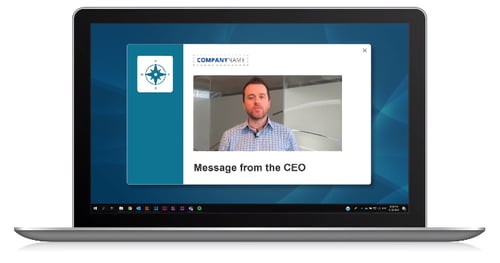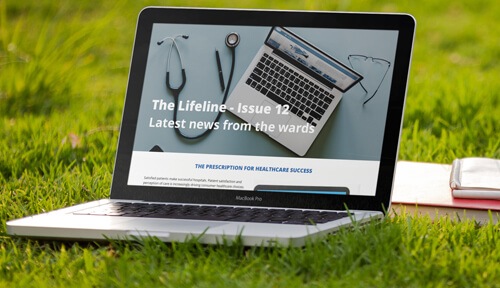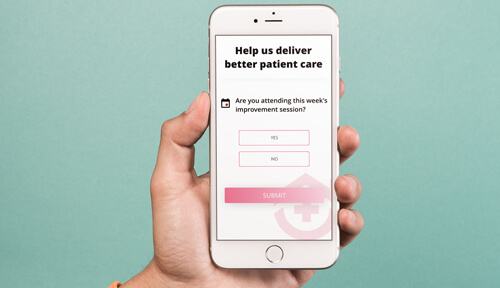
Healthcare technology is among the most important equipment in a hospital. The introduction of new technology like electronic medical records (EMR) or telemedicine promise to improve the quality and efficiency of services.
And yet, many new systems which promise so much end in bitter disappointment for the IT Managers involved. Overall, only 29% of IT project implementations are successful.
All the work done in juggling legacy infrastructure, system integrations and an agile implementation strategy, can be undone by a workforce unwilling to use the new system or software.
SnapComms works with dozens of healthcare facilities across the world and all of them tell us the same thing: getting staff on board is crucial. Even when every technical issue is resolved, staff must still be informed about, invested in and encouraged to use the tool.
Successful launches of new healthcare technology share common themes. Including these in your planning will increase user adoption and ensure your hard work doesn’t go to waste.
1. Leadership Support
A leadership team visibly in support of new healthcare technology provides a strong force for encouraging adoption and overcoming resistance. It provides a genuine endorsement of value and creates the right workplace environment for positive user adoption.
Use leaders as figureheads for your planning, implementation and promotion. Include them in every digital newsletter broadcast to staff. Feature them in a CEO video message to add some tangible realism to their endorsement. But avoid platitudes or hollow promises – this will only seem disingenuous and reduce employee trust in the message.
Hesitation around the introduction of new systems and tools is natural. Hospital staff are busy and time-poor, focused on delivering patient care. Trust in leadership backing is essential, as demonstrated by the example of the former CEO of Kaiser Permanente, where in order to earn physician trust he had to personally lead the process.

2. Project Management
Objectives, planning, communication, implementation and measurement are the core principles of project management. Following this approach when introducing new technology in healthcare environments will ensure faster user adoption – and fewer setbacks along the way.
Handled poorly, the introduction of new systems can have an adverse effect on healthcare workers. Research points to electronic health records (EHRs) actually contributing to physician burnout rather than facilitating patient care.
Set milestones for key success events throughout the project – pilot testing, peer review, process documentation, staff training, full or staggered execution, post-implementation measurement. Keep staff informed as the project reaches each milestone with status updates using scrolling desktop tickers.
Track progress towards each of these milestones and assess what’s needed to cover critical gaps – are new processes logical and understood, do systems integrate as expected, is more staff training required?
Identify key clinical, administrative or medical staff within your organization, both in seniority or positions as respected thought leaders. Engage these influencers with persuasive messaging to build positive advocacy which then influences the wider workforce.

3. Clear Communication
Your communication plan should continually reinforce the value of the new technology to users. Start early in the project and include what the new functionality does, the relationship to existing systems and processes, timeframes for deployment and what support channels are available.
All employees should have access to accurate and timely information. How easy healthcare professionals perceive the new technology to be is a significant influence on how successfully it is adopted. Manage end user expectations so that they know exactly what benefits the new tool brings – and equally, what it doesn’t. This mitigates disappointment if expectations aren’t met, however unrealistic they were.
Remember that end users often don’t think like IT staff do. Avoid complex language or concepts that might intimidate end users. Keep messages simple and relevant to specific needs, regardless of how complex the digital transformation or information technology project you’re implementing. Overlong or incomprehensible messages will see users switch off.

4. End User Involvement
Healthcare staff should be involved every step of the way, from initial scoping to on-site use. They can provide valuable input into the decision-making process, ensuring new health technology tools deliver what’s needed. They can undertake accurate testing under real-world conditions. And they speak the language of the wards – ensuring communications are understood by everyone affected.
End user involvement is a big factor for user adoption. If employees don’t feel like they can communicate openly or have adopted a silo mentality, adoption will suffer. Monitor discussions on company intranet forums and the questions asked through helpdesks.
Understand user responses to the new software through a staff survey with built in recurrence for unanswered surveys. This is an effective, light-touch way to assess what’s working, measure attitudes, identify gaps in knowledge and help resolve issues.

Healthcare technology is on the rise as advances in digital tech and virtual capabilities are introduced on the wards. Telemedicine programs are being developed by 90% of the healthcare industry, in a market worth $17.8 billion globally back in 2014.
The success of programs like this relies heavily on the staff using it. When healthcare staff are informed and engaged throughout, user adoption is virtually assured.


